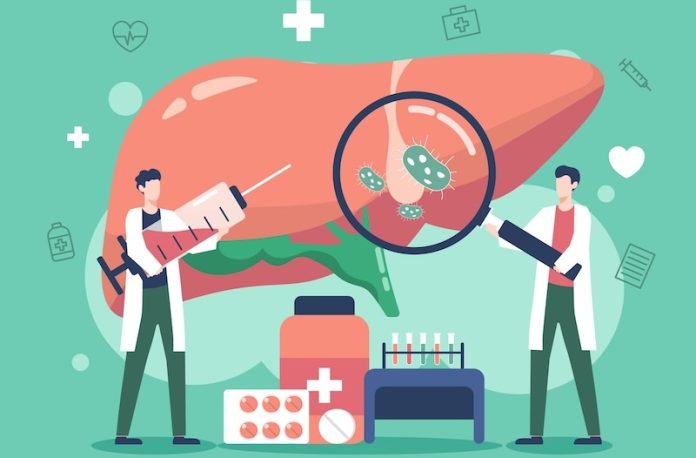
Liver cancer and fatty liver disease are two conditions that affect the liver, an essential organ responsible for many vital functions in the body.
While they are different conditions, they can both lead to serious health problems. Understanding the causes, symptoms, and treatments for these diseases can help in managing and preventing them.
Liver cancer is a type of cancer that begins in the cells of the liver. The most common type is hepatocellular carcinoma, which starts in the main type of liver cell called hepatocytes. Other types include bile duct cancer and angiosarcoma.
The exact cause of liver cancer is often unclear, but several risk factors have been identified. Chronic infection with hepatitis B or C viruses is a major risk factor because these infections can lead to long-term liver inflammation and damage.
Cirrhosis, a condition where the liver becomes scarred from damage, also significantly increases the risk of liver cancer. Cirrhosis can result from chronic alcohol abuse, hepatitis infections, or non-alcoholic fatty liver disease.
Symptoms of liver cancer may not appear in the early stages, making it hard to detect initially. As the disease progresses, symptoms can include unexplained weight loss, loss of appetite, upper abdominal pain, nausea and vomiting, general weakness and fatigue, and jaundice, which causes yellowing of the skin and eyes.
Recent research has made significant strides in understanding liver cancer and developing treatments. Screening and early detection are crucial for improving outcomes, especially for people at high risk, such as those with chronic hepatitis or cirrhosis.
Treatment options depend on the stage of the cancer and the overall health of the patient. They can include surgery to remove part of the liver, liver transplantation, targeted therapy, immunotherapy, and radiation therapy.
Targeted therapies, which focus on specific molecules involved in cancer growth, and immunotherapies, which help the body’s immune system fight cancer, have shown promise in treating advanced liver cancer.
Fatty liver disease, on the other hand, is a condition where fat builds up in the liver. There are two main types: alcoholic fatty liver disease (AFLD) and non-alcoholic fatty liver disease (NAFLD).
AFLD is caused by heavy alcohol use, while NAFLD occurs in people who drink little or no alcohol. NAFLD is more common and often associated with obesity, type 2 diabetes, high blood pressure, and high cholesterol levels.
When NAFLD progresses and causes inflammation and liver cell damage, it is known as non-alcoholic steatohepatitis (NASH), which can lead to cirrhosis and increase the risk of liver cancer.
Fatty liver disease often has no symptoms, especially in the early stages. When symptoms do occur, they can include fatigue, pain or discomfort in the upper right abdomen, and, in severe cases, jaundice.
Because fatty liver disease can be asymptomatic, it is often detected during routine blood tests or imaging studies for other conditions.
Research into fatty liver disease has highlighted the importance of lifestyle changes in managing and preventing the condition. Weight loss, a healthy diet, regular physical activity, and controlling underlying conditions like diabetes and high cholesterol are essential.
There is currently no specific medication for NAFLD, but researchers are investigating potential treatments, including medications that target insulin resistance, inflammation, and liver fibrosis.
Interestingly, there is a connection between fatty liver disease and liver cancer. People with NASH have a higher risk of developing liver cancer, even without cirrhosis. This underscores the importance of managing fatty liver disease to prevent its progression to more severe conditions.
In conclusion, liver cancer and fatty liver disease are serious conditions that can significantly impact health. Liver cancer is often linked to chronic hepatitis infections and cirrhosis, while fatty liver disease is associated with lifestyle factors and metabolic conditions.
Early detection and management through lifestyle changes, regular screening, and medical treatments are crucial in improving outcomes for both conditions.
Ongoing research continues to provide new insights and advancements in treatment, offering hope for better management and prevention in the future.
If you care about liver health, please read studies about a diet that can treat fatty liver disease and obesity, and coffee drinkers may halve their risk of liver cancer.
For more information about liver health, please see recent studies that anti-inflammatory diet could help prevent fatty liver disease, and results showing vitamin D could help prevent non-alcoholic fatty liver disease.
Copyright © 2024 Knowridge Science Report. All rights reserved.



